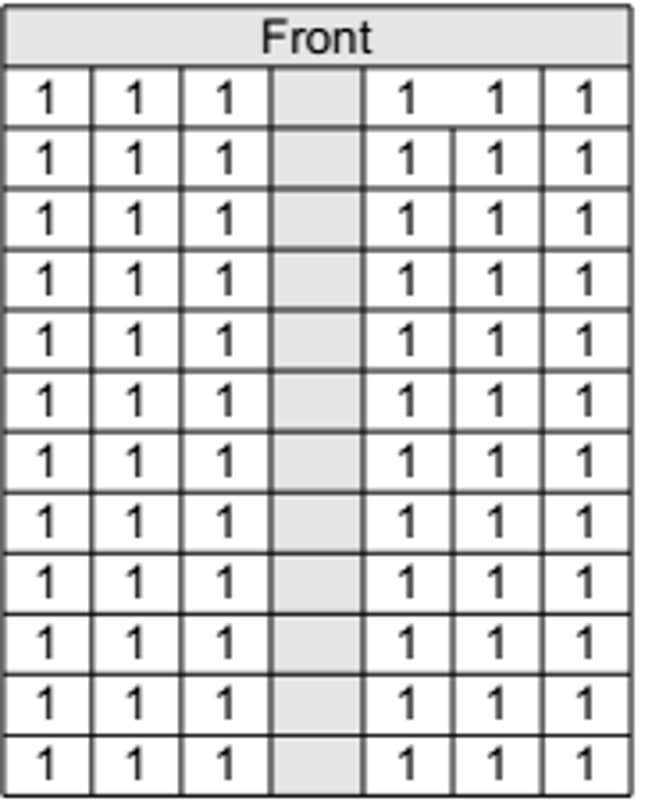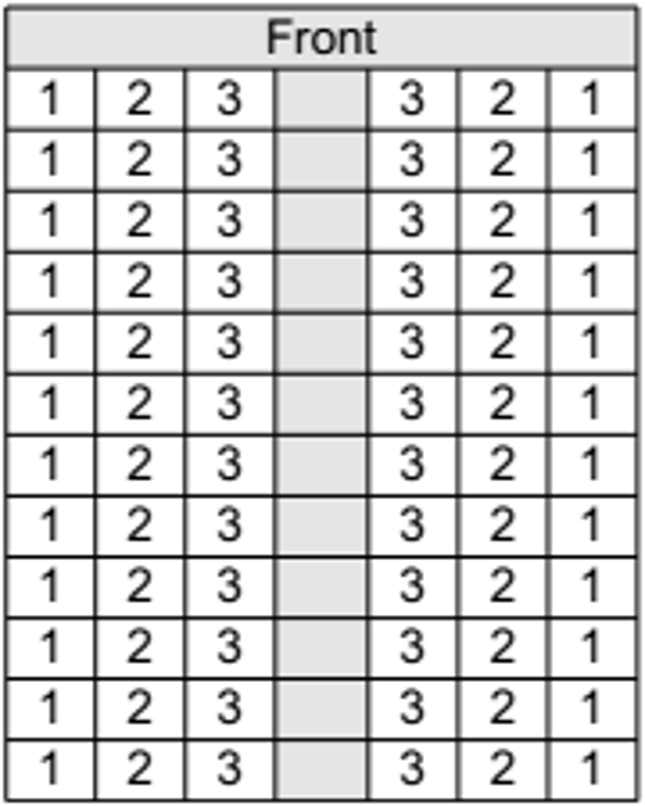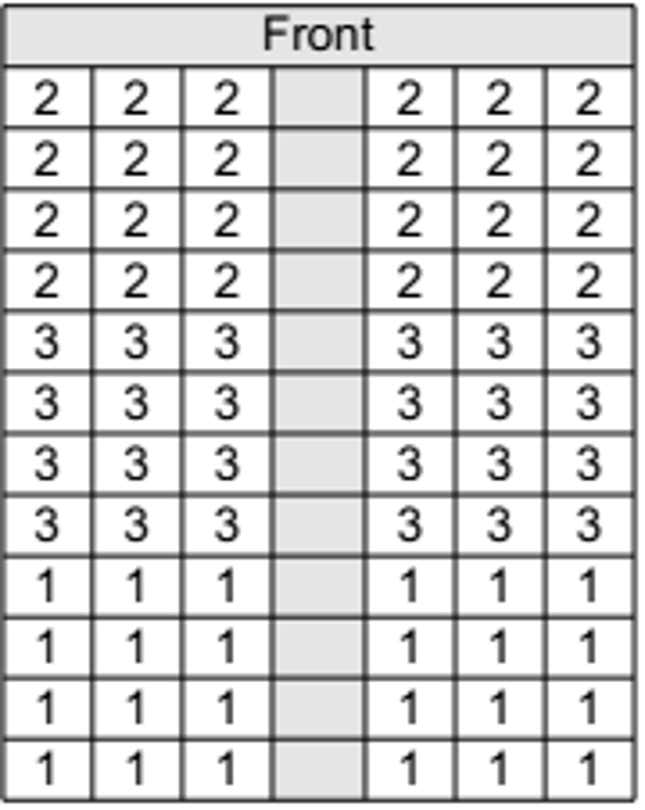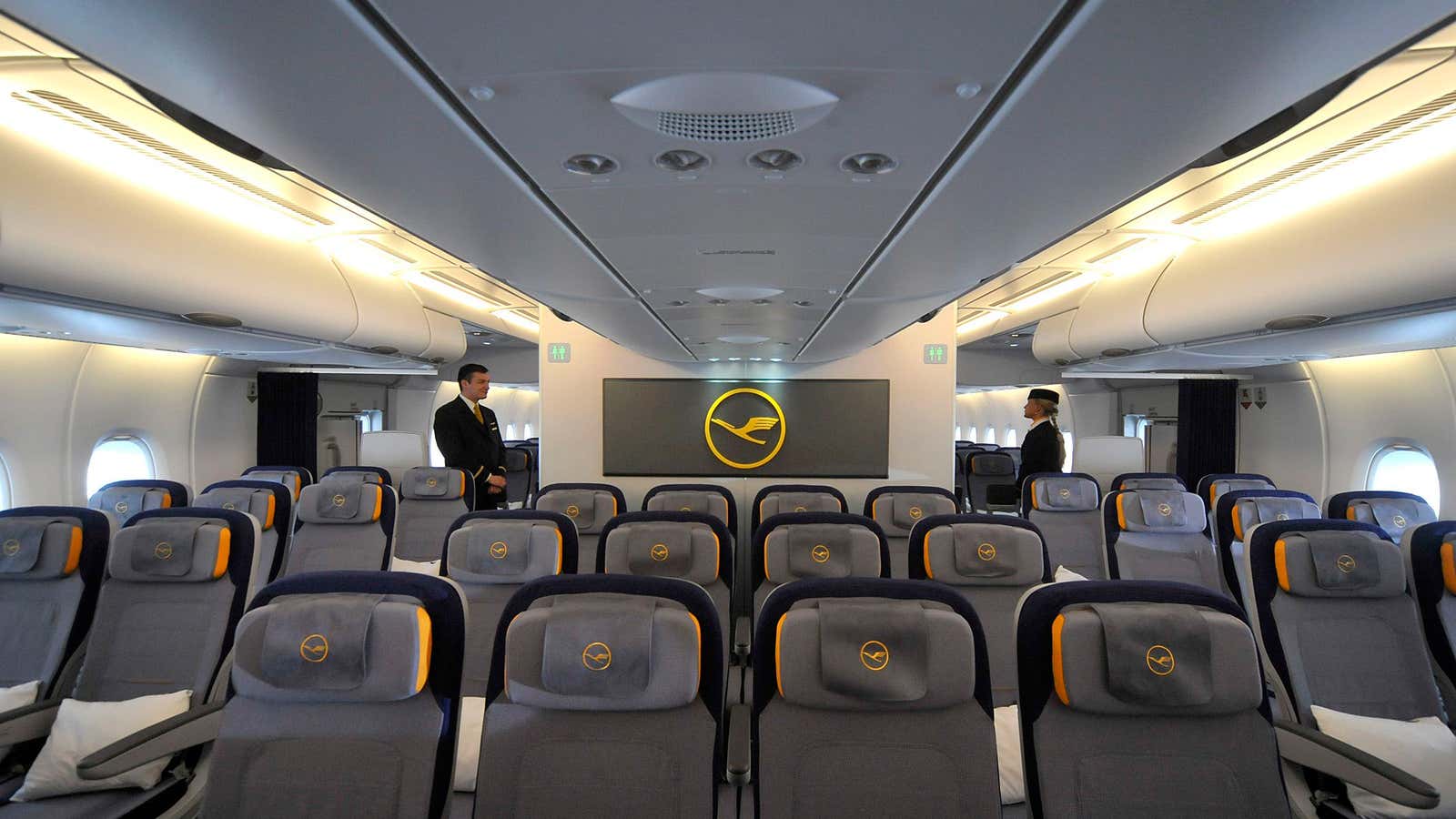Boarding an airplane these days can be as vexing as enduring the flight itself. Mobs of passengers elbow past each other to get close to the boarding aisle, only to find that there’s no apparent rhyme or reason to their boarding order. For those braving the skyways during the hectic summer travel season, this might help explain why:
If your aircraft boarding experience feels totally random, that may be because it is. Random boarding is a scientific method (pdf) invented in 2008 by a frustrated Illinois-based astrophysicist named Jason Steffen who, after waiting too long in a boarding line, vowed to find a faster way to herd people onto a plane.
After testing a bunch of algorithms in a simulated airplane cabin (Steffen recruited 72 mock passengers with luggage to board a Boeing 757), Steffen found that the boarding path taken by most airlines, of boarding blocks from the rear, was the slowest method of all. He tested the timing of boarding back-to-front, window-middle-aisle, boarding in four-row blocks and his own method, which involved seating people in alternate rows of windows seats, middle seats and aisles. The fastest solution, he found, was to board passengers in no particular order.




The key to Steffen’s method, which he found cut boarding times in half, was making better use of aisle space so that passengers didn’t get tangled up while stowing their bags.
Since his findings were published, some airlines have tried out various versions of random boarding. American Airlines found that its random boarding strategy shaved three to four minutes off average boarding times of 20 to 25 minutes. Both it and United Airlines currently use some version of random boarding.
But the approach hasn’t pleased everyone. The Association of Professional Flight Attendants (i.e. the people who have to tame crazed and confused passengers) has criticized the method for causing “complete chaos in the cabin.” Probably for simplicity’s sake, many airlines still board back-to-front or by section of the plane.
Boarding times have only slowed more as US airlines have packed in more passengers. Research by Boeing found that airline boarding slowed 50% between 1970 and 1998. Charging passengers for checked bags has added to those delays; passengers block the aisles shoving their belongings into overhead space.
There’s a simpler, and arguably more lucrative, way to speed boarding along: clear the aisles of passengers fussing with overhead bags, either by charging them for the privilege or giving priority to passengers who board without.
